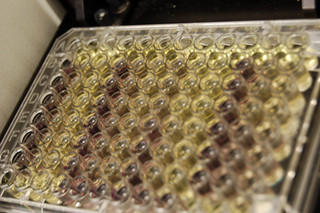Question:
What is the importance of assays in protein concentration?
The Protein Man Says:
Determining the protein concentration in your sample is an important step in any laboratory workflow that involves protein extraction and/or analysis. Knowing how much protein you have can help you compare results from one protein to another and from one experiment to the next. It can likewise help you verify the success of the lysis step, determine your protein yield, measure enzyme kinetics more accurately, and normalize multiple samples for storage or comparison, to name a few.
Needless to say, selecting an appropriate assay plays a very important role in determining the protein concentration in your sample and the overall success of your research.
 Selecting an Appropriate Protein Assay
Selecting an Appropriate Protein Assay
It is important to note that there is no single assay method that can be suitable for all protein types. As such, you must be able to choose an appropriate assay and protein standard that is most compatible with your samples. To make sure you use the most suitable assay for your application, here are some of the factors that you need to consider:
-
Presence of non-protein agents in the sample and/or lysis buffer
-
Assay sensitivity and sample size
-
Dilution of the protein sample
-
Protein-to-protein variations
-
Speed and convenience
-
Availability of spectrophotometer or plate reader
Most Common Types of Protein Assays
There are two main types of protein assays that are commonly used in most protein research laboratories. This includes protein-copper chelation assays (such as the BCA and modified Lowry assays) and protein-dye binding assays (such as the Coomassie or Bradford protein assays).
BCA Assay
The BCA assay is a colorimetric assay that makes use of the biuret reaction. It chelates Cu2+ ions and reduces them to Cu+ ions which then react with the BCA to form a purple-colored product at an absorbance of 562 nm. It is ideal for studying protein-protein interactions and in estimating protein recovery of membrane proteins from cell extracts. It is also ideal for high throughput screening of fusion proteins.
Bradford Assay
The Bradford assay is another colorimetric assay that is compatible with most buffers, reagents and preparations. It is relatively easy to use since it requires no working reagent preparation and is proven to give fast, accurate results. This is recommended for determining protein content of cell fractions and for assessing protein concentrations prior to conducting gel electrophoresis.
Since there is no single assay that is sensitive to all protein types, you need to have a working knowledge on how each assay works so you can choose the most suitable one to use for each of your applications.
Image By: Joe Dunckley






